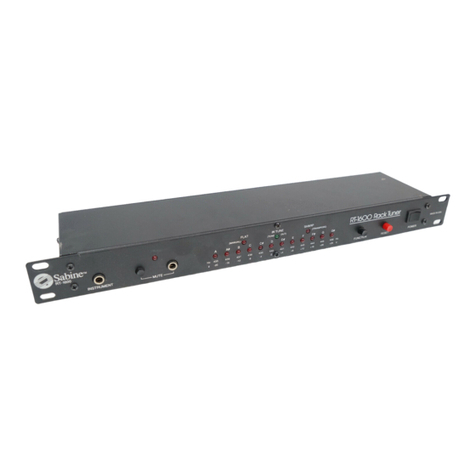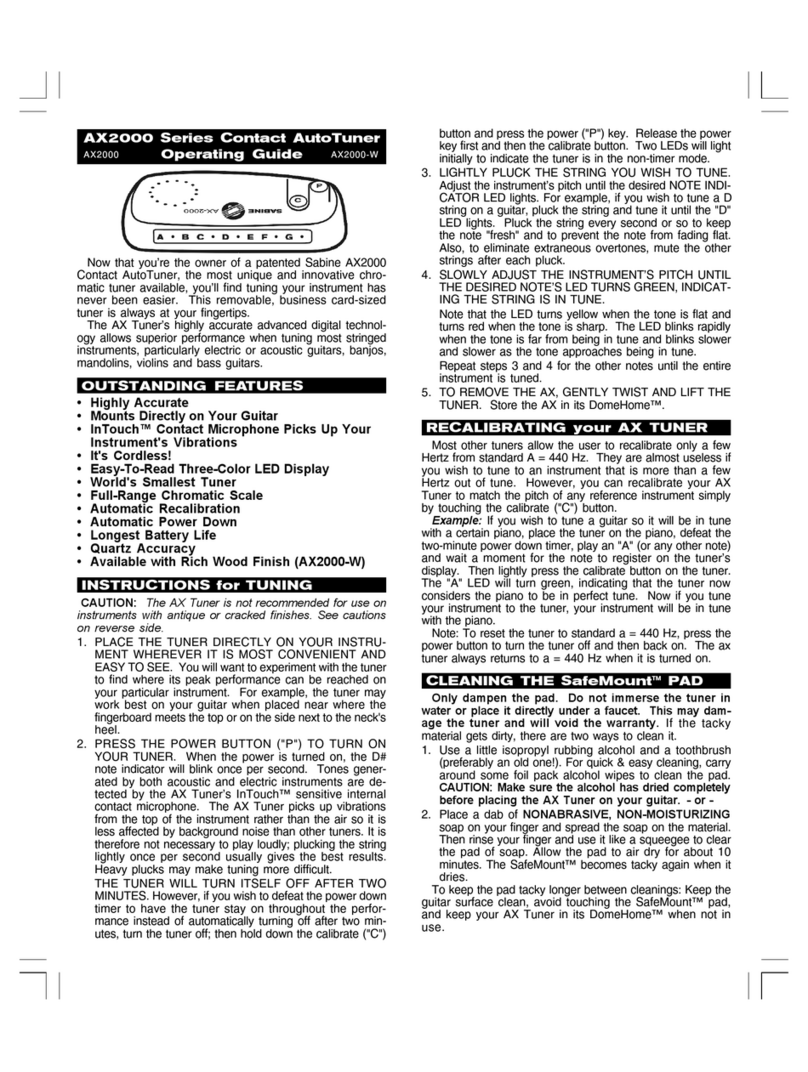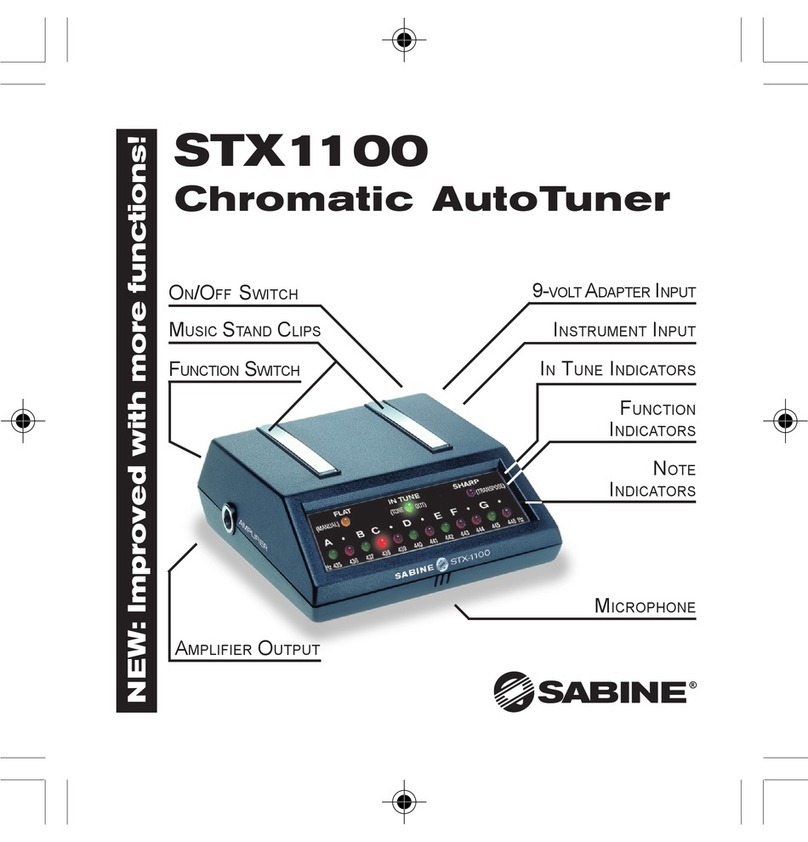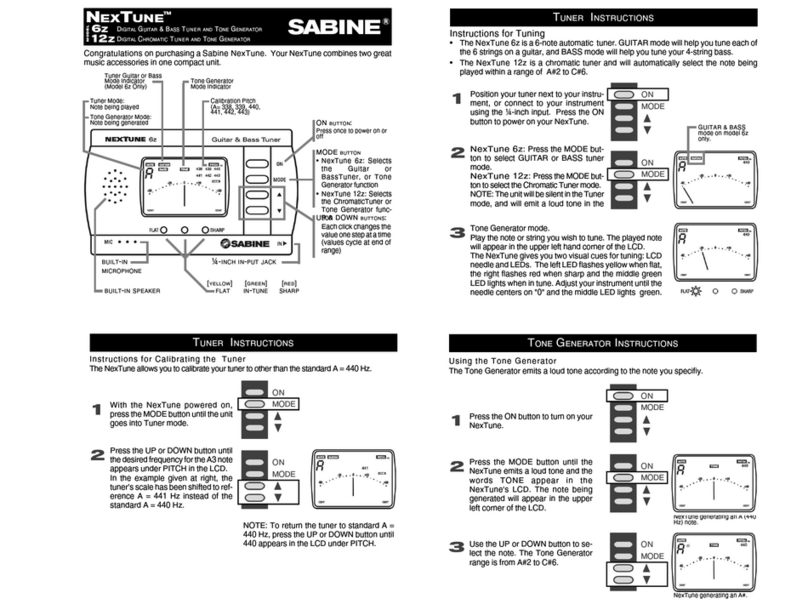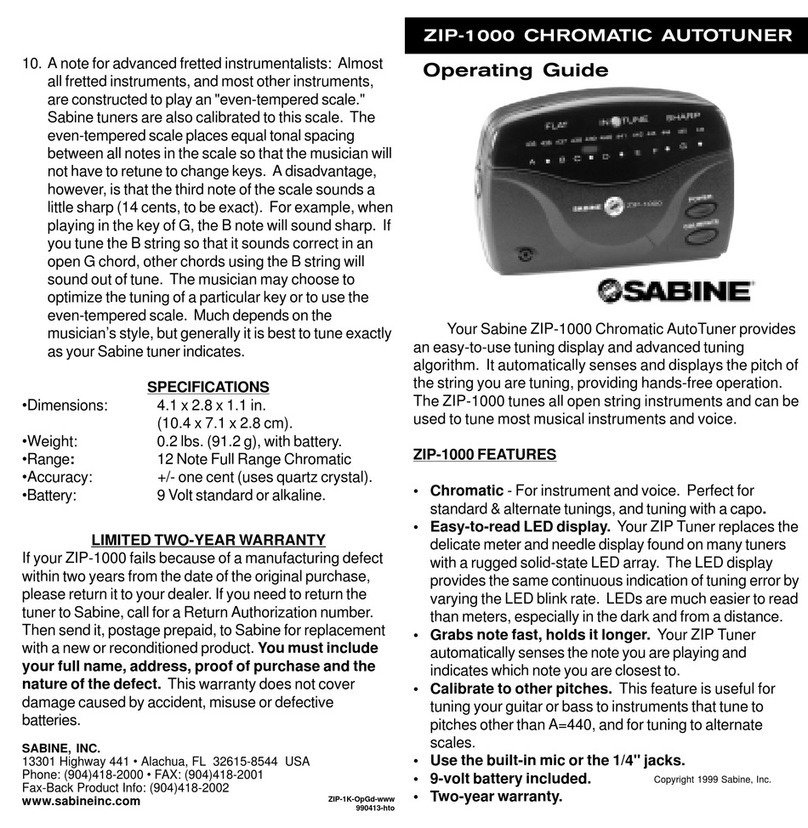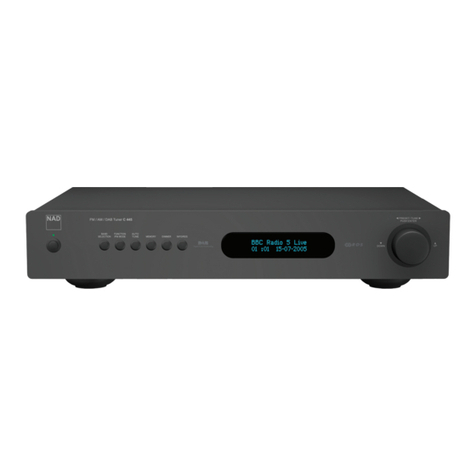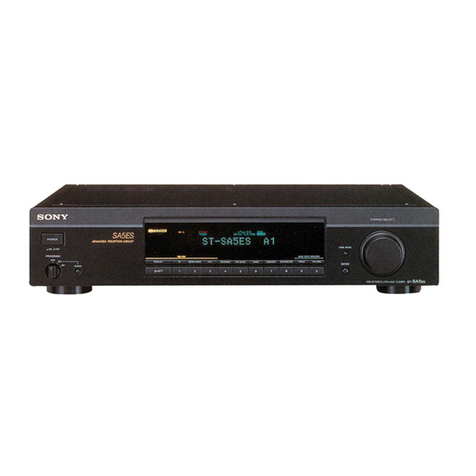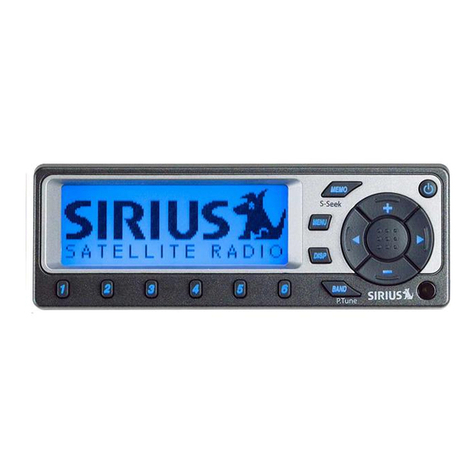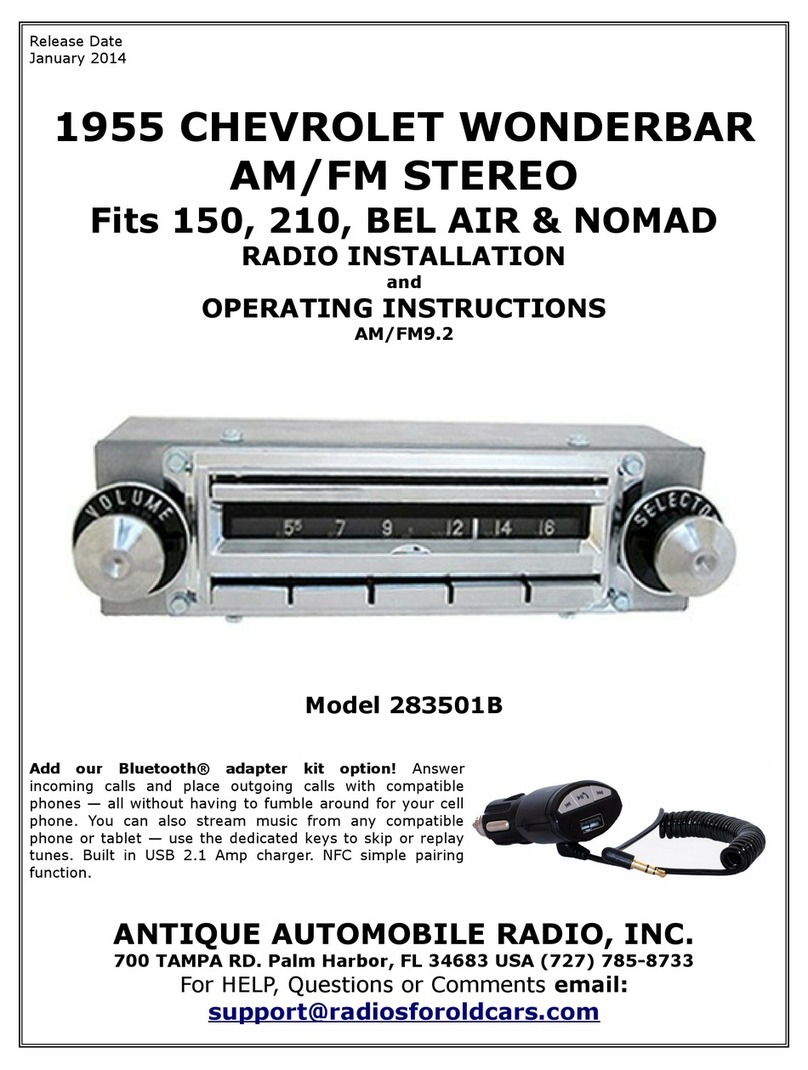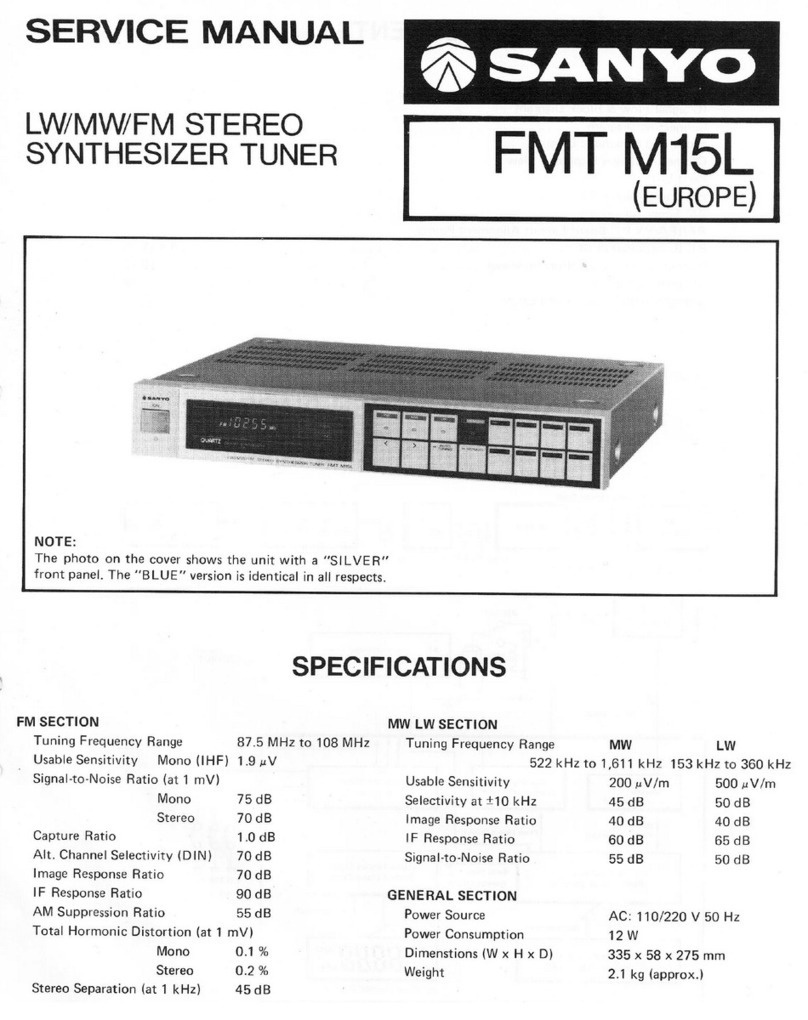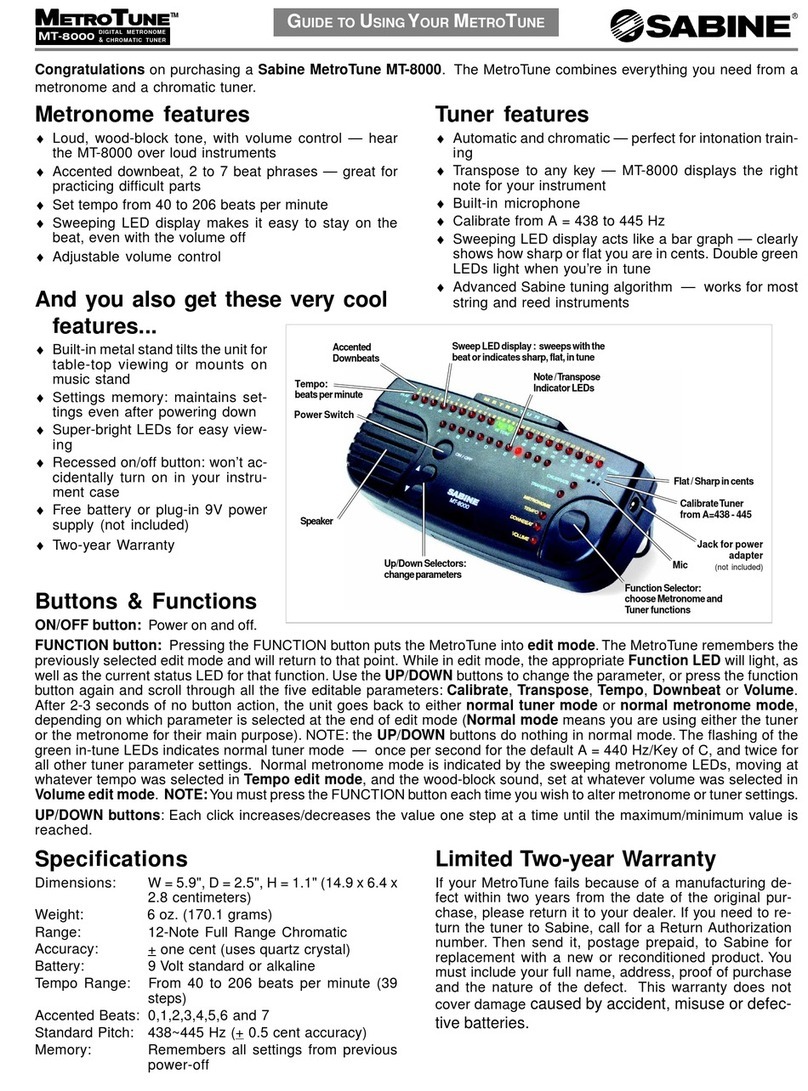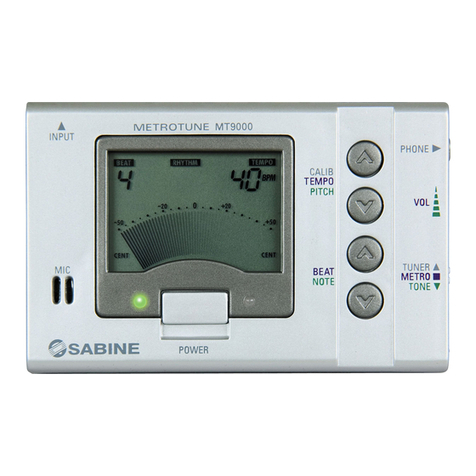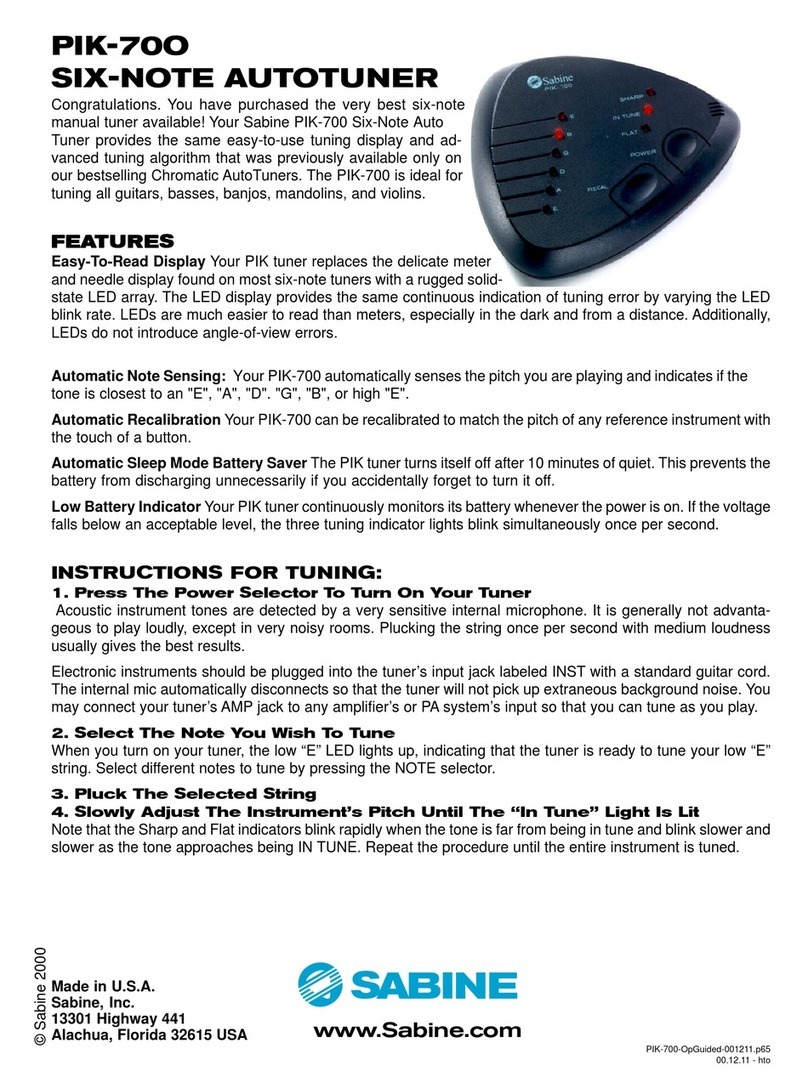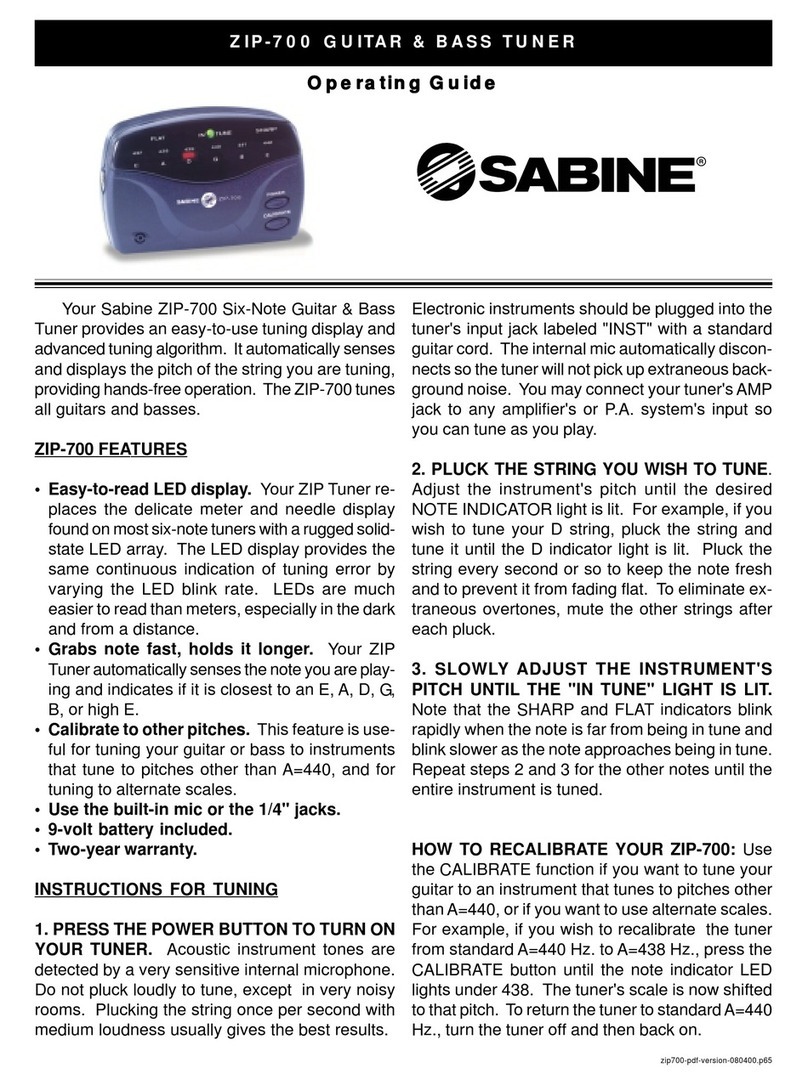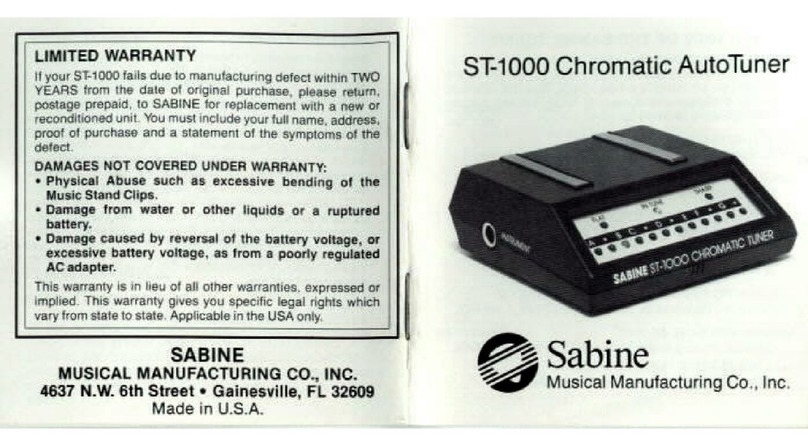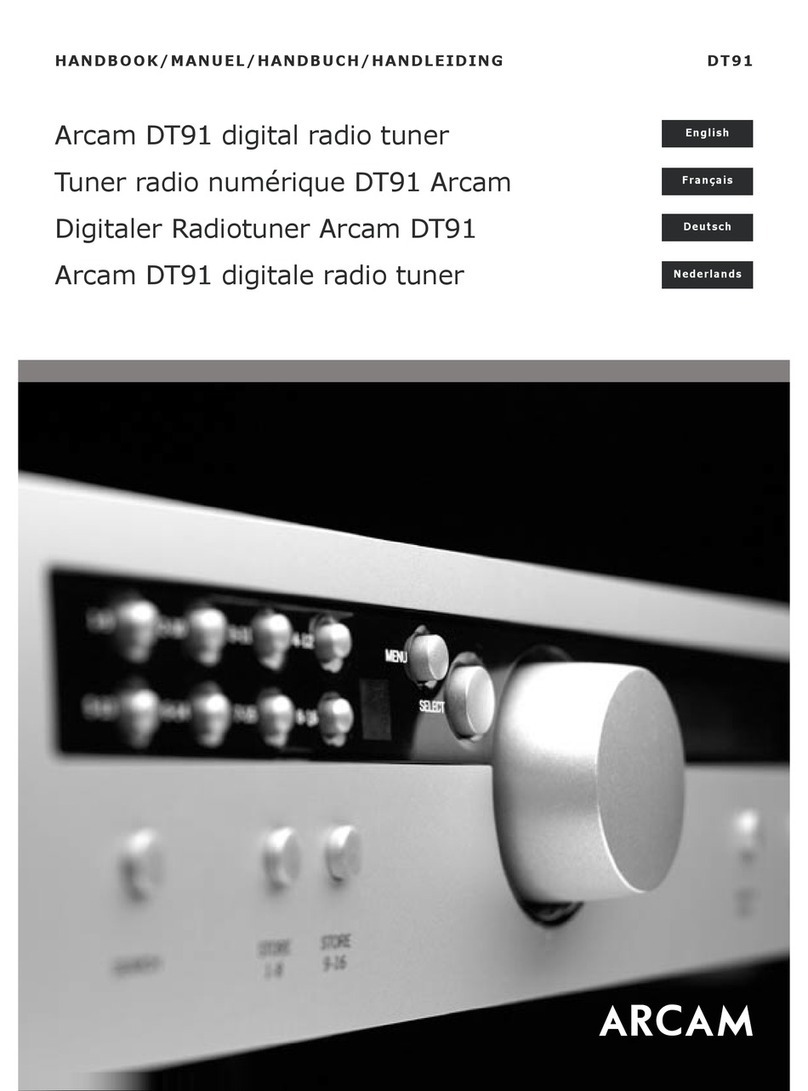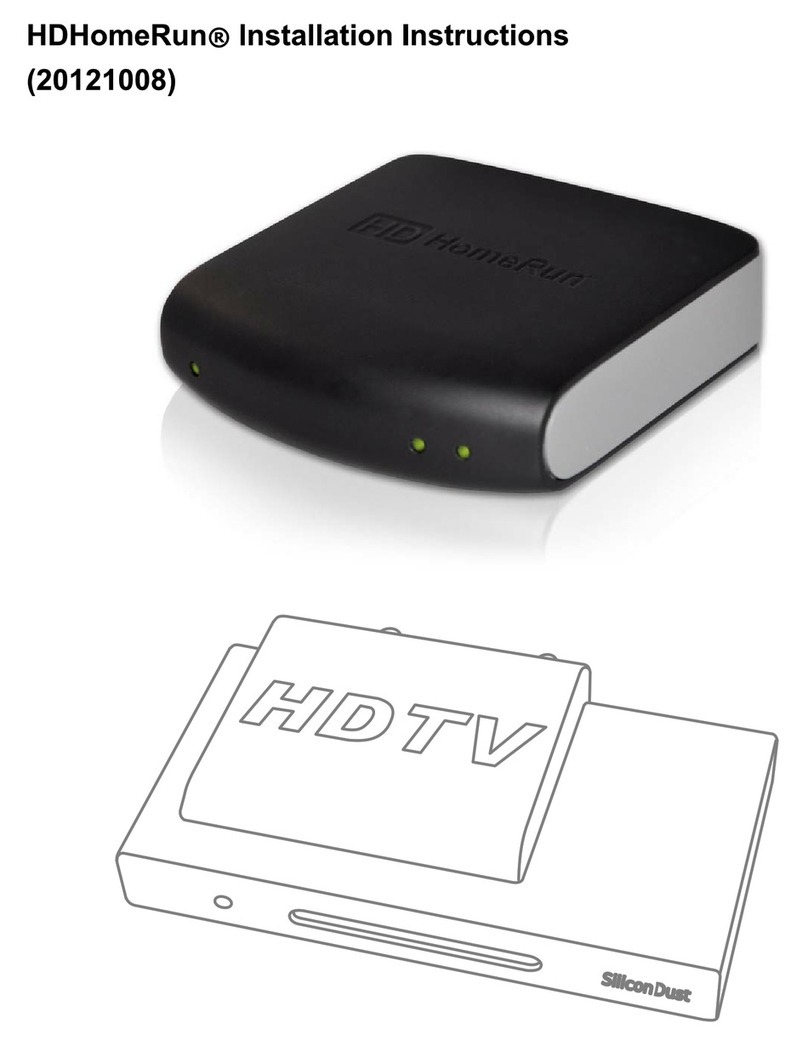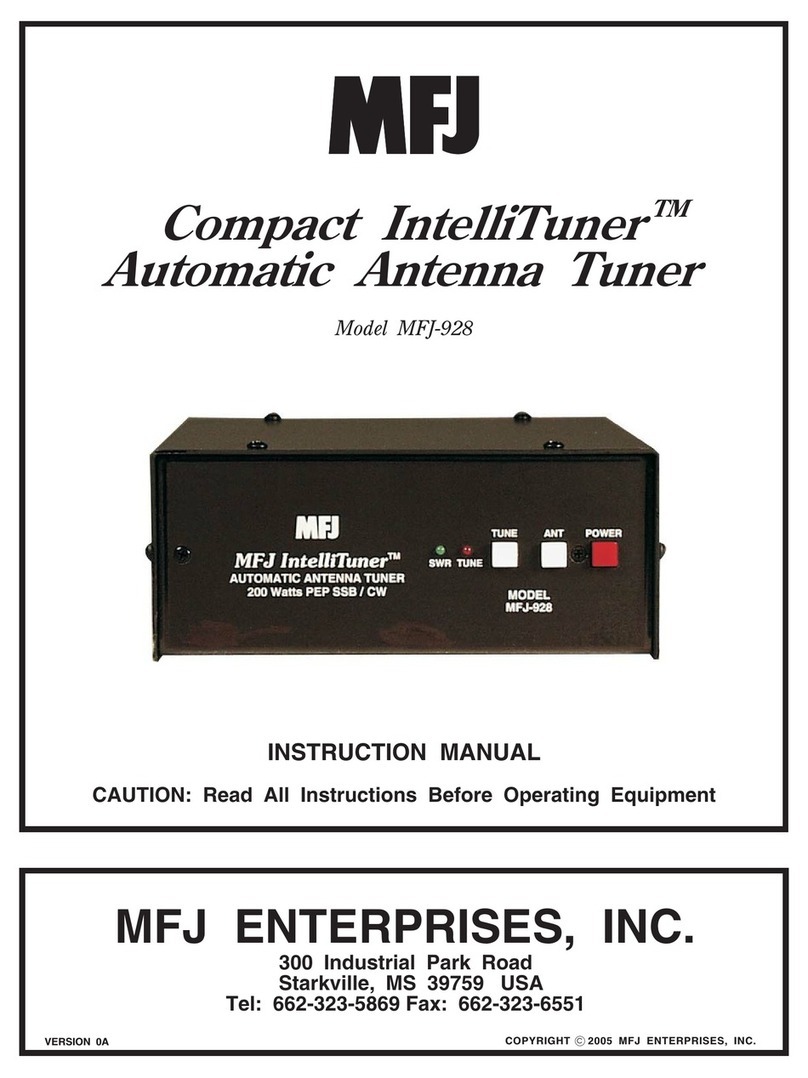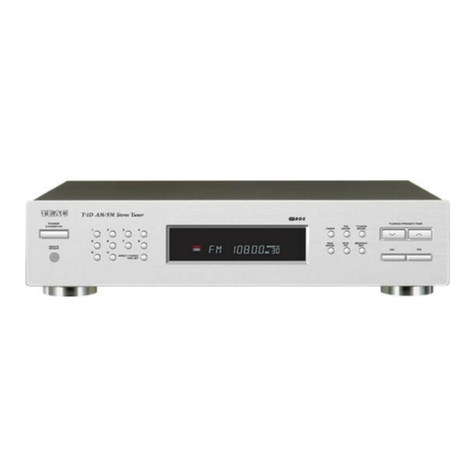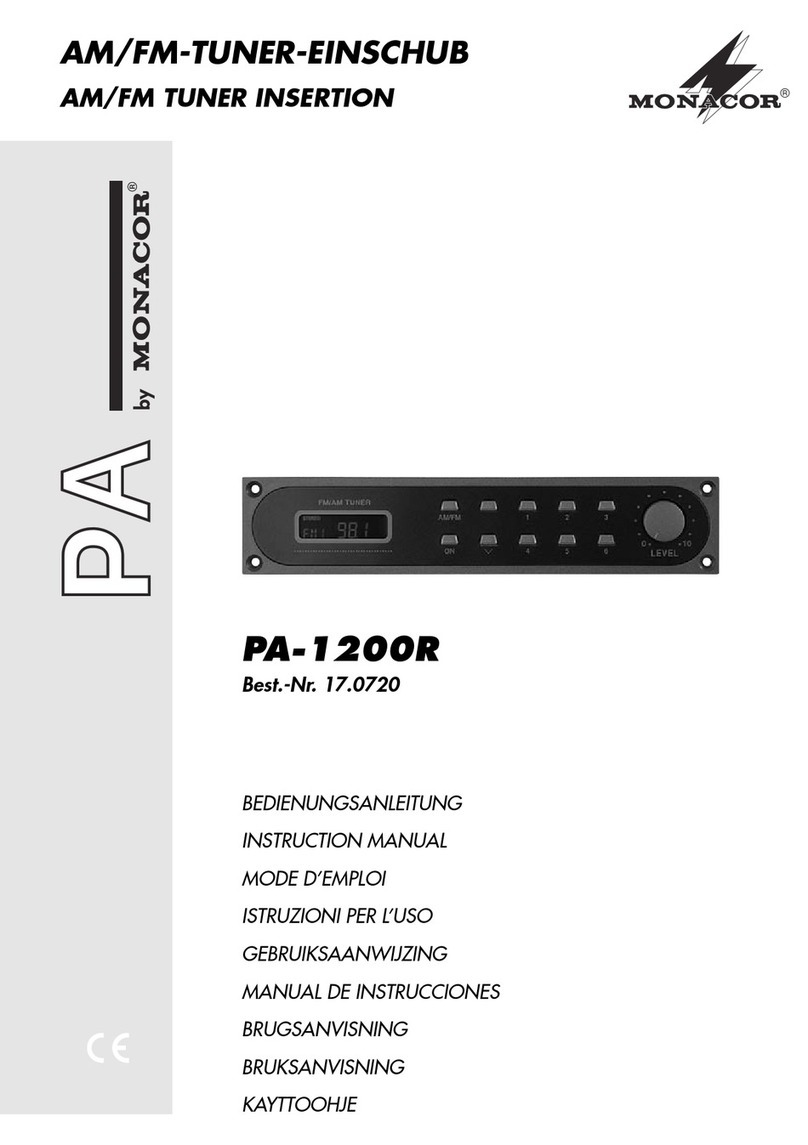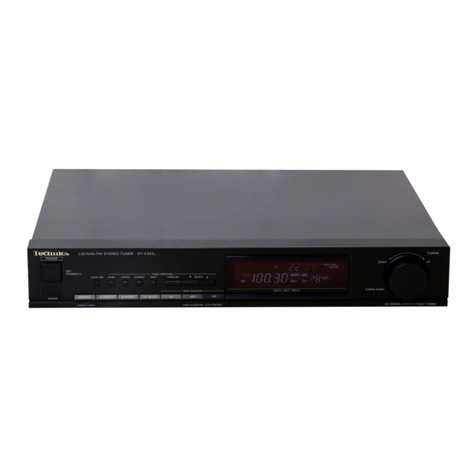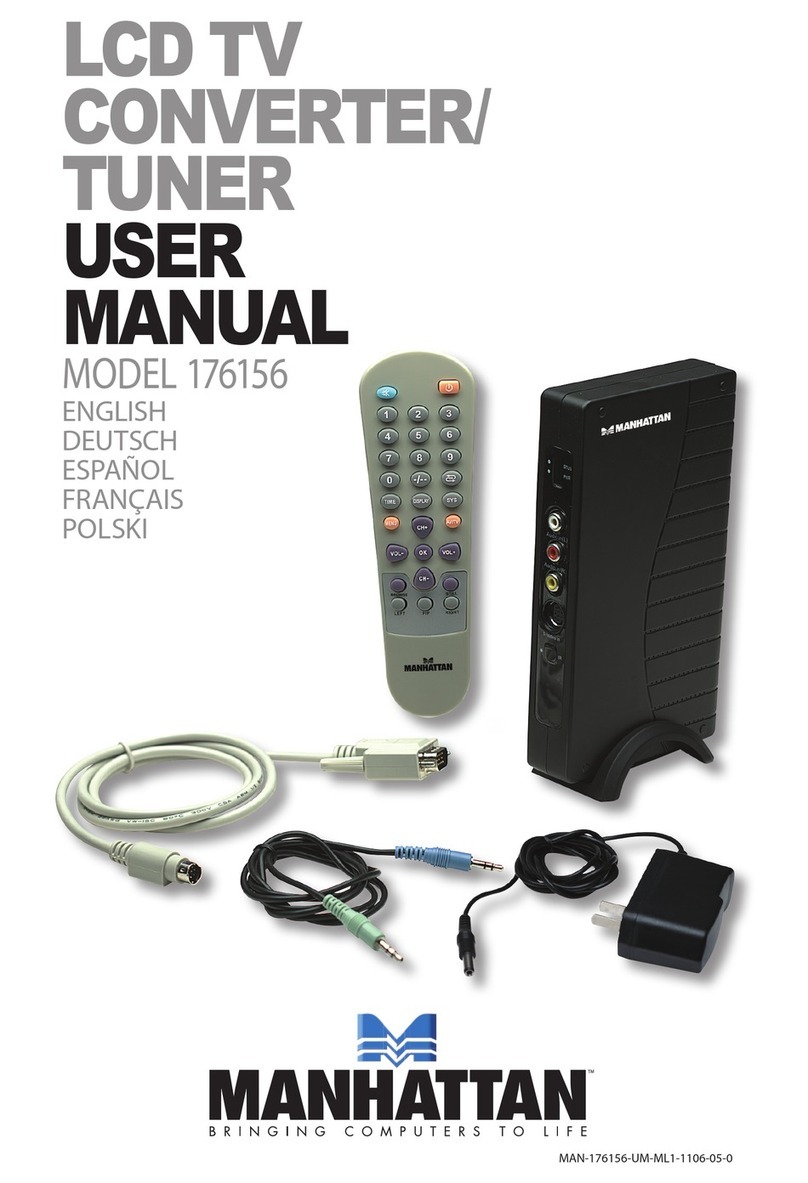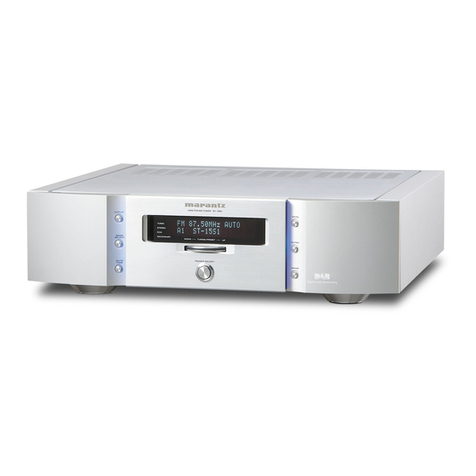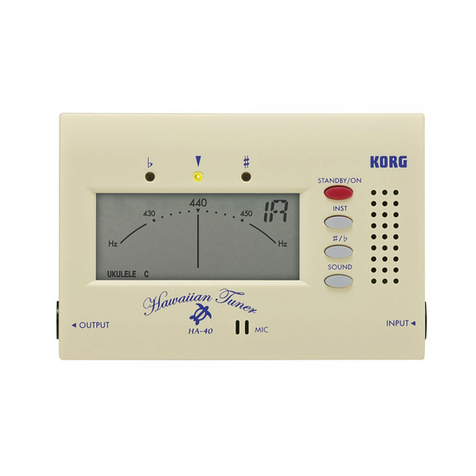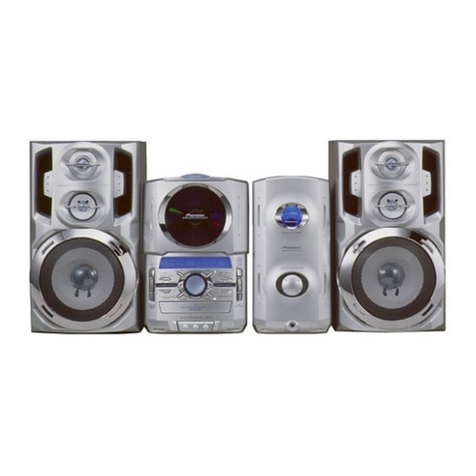INSTRUCTIONS FOR TUNING
1. PRESS THE POWER BUTTON TO TURN ON YOUR
TUNER. Acoustic instrument tones are detected by a very
sensitive internal microphone. Do not pluck loudly to tune,
except in very noisy rooms. Plucking the string once per
secondwith medium loudnessusuallygivesthebest results.
Electronicinstrumentsshouldbe plugged into the tuner's
inputjacklabeled "INST" with a standard guitar cord. The
internalmicautomatically disconnects so the tuner will not
pickup extraneous background noise. You may connect
yourtuner'sAMPjackto any amplifier's or P.A.system's
inputsoyoucantuneasyouplay.
2. PLUCK THE STRING YOU WISH TO TUNE. Adjust the
instrument'spitch until the desired NOTEINDICATORlight
islit. For example, if you wishtotune your D string, pluck
the string and tune it until the D indicator light is lit. Pluck
thestringeverysecondorsotokeep the note fresh and to
preventit from fading flat. Toeliminateextraneous
overtones,mute the other strings after each pluck.
3. SLOWLY ADJUST THE INSTRUMENT'S PITCH
UNTIL THE "IN TUNE" LIGHT IS LIT. Note that the
SHARPandFLAT indicators blink rapidly when the note is
farfrombeingin tune and blink slower as the note
approachesbeingintune. Repeat steps 2 and 3 for the
othernotesuntilthe entire instrument is tuned.
HOW TO RECALIBRATE YOUR ZIP-1000: Use the
CALIBRATEfunction if you want to tune your guitartoan
instrumentthattunestopitchesother than A=440, or if you
wanttousealternatescales. Forexample,ifyouwishto
recalibrate thetunerfromstandardA=440Hz.to A=438
Hz.,presstheCALIBRATE button until the note indicator
LED lights under 438. The tuner's scale is now shifted to
thatpitch. To return the tuner tostandardA=440 Hz., turn
thetuneroffand then backon.
TUNING TIPS
Manymusicalinstruments have peculiarities thatcause
annoyingtuningproblems. Most of these peculiaritiesare
overcomebyfollowing these simple procedures:
1. Pluckonestring at a time.
2. Plucktheinstrumentoncepersecondtokeepthenote
"fresh"whileyouaretuning. Notesgonoticeablyflata
secondortwoafter being plucked. If tuning a higher-
pitchedinstrument(suchasamandolin), pluck a little
faster; foralower-pitched instrument (such as abass),
pluckslower.
3. Donot pluck loudly. Generallylighttomediumvolumes
providepurer tones that areeasierfortunerstoanalyze.
4. Pluckthe strings with the flesh of the thumb. Finger-
nailsandflatpicksaddovertonesandslowthetuning
process.
5. Tunefrom a pitchthat is flat up to the pitchyou desire.
Thisprocedureremovesanyslackinthegearsofthe
instrument’stuning heads. If you tunefromSHARP to
INTUNE,the gears will slip asyouplay,and the
instrumentwillgoflataftera few minutes of playing.
6. Ifyouhavedifficultygetting a note to register onthe
tuner, try touching the other strings lightly tostop their
sympatheticvibrations. This will eliminate any
extraneousovertones thatmaydisturbthe tuning.
7. Usegoodstrings. (WerecommendSabine
NitroStasis™ Premium Strings.)Oldstrings lose
theiruniformity and do notvibrateevenly. New strings
stretchflatasyouplay.
8. Allsources of friction cause tuningproblems. For
example,iftheslot in an instrument’snutis too tight,
the string will be pulled flat as it is played. A tight nut
(orcapo)will cause the string’s pitch to change insteps
ratherthanevenly.
9. Avoidpressure on the instrument while tuning. Even
moderatepressureontheneckofaguitarwillcausea
noticeablechangein pitch. Also, press the strings
straightdowntothefingerboard. Bendingthestrings
sidewaysisvery common, especially on difficultchords,
butcausesthe strings to be pulled sharp.
